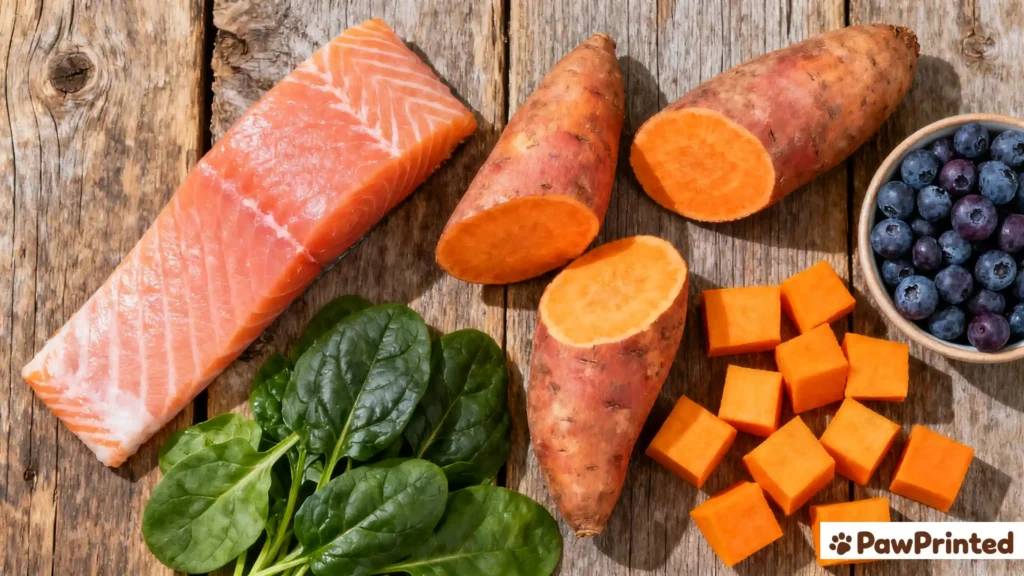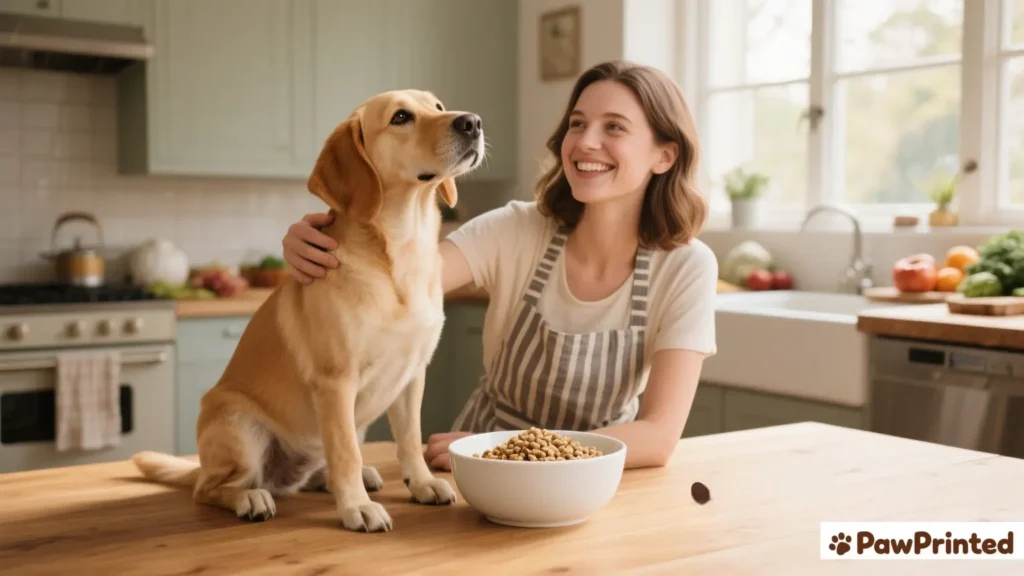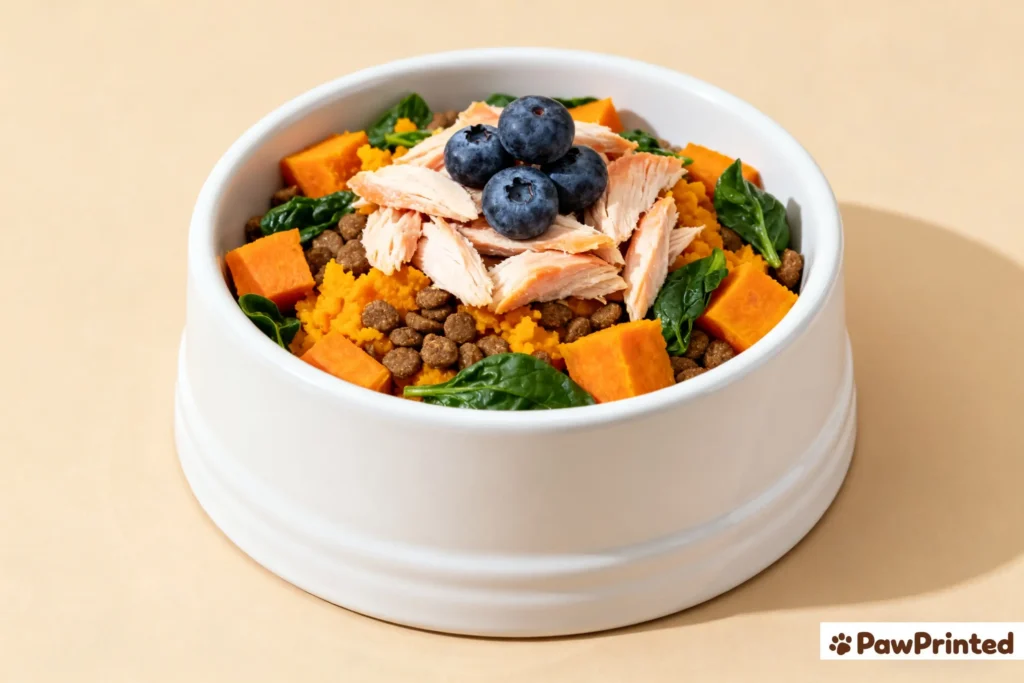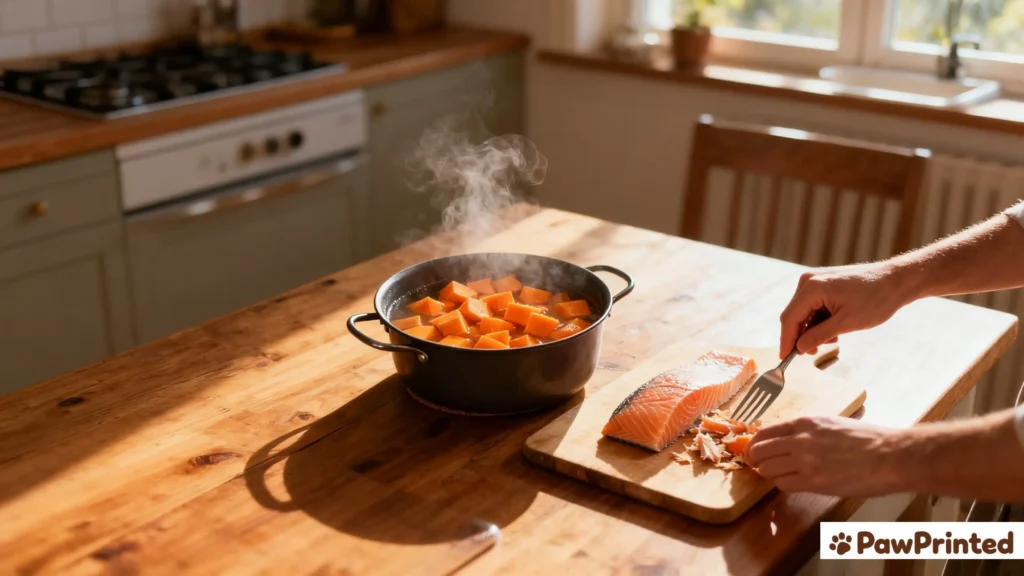I’m Emma. When grain-free formulas started popping up everywhere, my inbox filled with the same question: “Do dogs need grain-free?” The short answer: it helps some dogs, but it’s not a universal upgrade. This guide walks through what “grain-free” actually means, the real-world pros and risks, who may benefit, and the solid alternatives we trust on PawPrinted.
Red flag — call your vet: unexplained weight loss, persistent diarrhea or vomiting, lethargy, coughing or shortness of breath, or sudden decline in exercise tolerance. Diet changes shouldn’t cause ongoing distress.

What “Grain-Free” Really Means
Grain-free typically removes common grains like wheat, corn, soy, barley, oats, and rice. They’re often replaced by starchy plants or legumes—think sweet potato, potato, peas, lentils, chickpeas. That swap doesn’t automatically make a food gentler or “cleaner”—it’s just different carbohydrate sources and fiber types.

Why Some Families Choose Grain-Free
Three common reasons: (1) suspected grain allergy or sensitivity, (2) digestibility preferences, and (3) marketing that frames grains as “fillers.” In our experience, many tummy issues aren’t grains at all—they’re overall formula changes, fast transitions, or stacked variables. If your dog truly struggles with frequent GI issues, start with our hubs on allergies and limited-ingredient diets before jumping to grain-free.
Potential Benefits (For the Right Dogs)
Some dogs do better without certain grains—less itch, calmer digestion, more consistent stools. Grain-free formulas can also nudge protein and fat higher, which benefits highly active dogs when portions are measured carefully. For sensitive tummies, compare this path with our sensitive-stomach dry picks and diarrhea-focused guide to see which lever actually helps.

The Risks & The Debate
“Grain-free” isn’t automatically safer. Certain ingredient patterns—especially heavy reliance on peas and legumes—have been discussed in relation to heart health concerns. That doesn’t mean every grain-free food is risky; it means pick carefully, measure by calories, and watch your dog (energy, stool, coat, stamina). If you pivot diets, follow our transition guide to minimize gut stress.
Who Might Benefit from Grain-Free?
Good candidates: dogs with confirmed grain allergy, or those who failed gentler tweaks (e.g., limited-ingredient formulas) yet improved on grain-free during a steady, measured trial. Not necessary: most healthy dogs without specific reactions to grains. For skin-first families, start with sensitive-skin nutrition and keep variables simple.

How We Choose (Vet-Informed Checklist)
- Look for complete & balanced statements and transparent labeling.
- Prefer formulas that don’t over-rely on a single legume; check overall macro balance.
- Match energy density to your dog’s activity and joint needs (see our weight-management notes).
- Introduce changes slowly (7–10+ days). Track stool, appetite, and energy with our transition steps.
- If grains are the only suspected trigger, compare with limited-ingredient choices first.
Smart Alternatives to Grain-Free
We often solve the same problems without going fully grain-free:
- Limited-Ingredient Diets: one protein + one carb to reduce variables. Start here if you’re unsure → LID Hub.
- Sensitive-Stomach Formulas: easier-to-digest bases with consistent stools → Dry picks / Wet picks.
- Homemade, Vet-Guided: controlled ingredients with simple structure → Homemade LID recipe.

FAQ
Is grain-free dog food always better?
No. It can help specific dogs, but it’s not a universal upgrade. Start with your dog’s symptoms and goals, and consider limited-ingredient options or sensitive-stomach formulas before you switch.
Does grain-free cause heart issues?
Concerns have focused on certain ingredient patterns (heavy legume use). That doesn’t mean all grain-free foods are risky. Choose thoughtfully, measure portions, and monitor your dog. If you switch, follow our transition guide.
Which grains are usually well-tolerated?
Many dogs handle rice and oats well, especially in balanced, predictable formulas. If grains seem tricky, test a simple LID approach to isolate variables.
Do puppies need grain-free?
Most don’t. Puppies need growth-stage nutrition before anything else. Explore our puppy hub for safer foundations and steady digestion.
If grain-free feels like the right experiment, keep variables calm: pick one formula, transition slowly, and log stool/energy notes weekly. If symptoms persist, pivot to LID or sensitive-stomach routes.
Follow PawPrinted on Pinterest
Save vet-approved dog food tips, LID recipes, and calm transition timelines.

